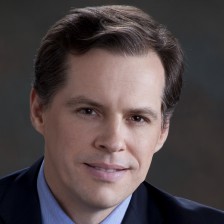The 2016 US Presidential race is the opportunity of a lifetime for those interested in the importance of social media and on-line activity for forecasting, in social and media biases, in long-term socionomic trends, and in improving our political environment.
Through a long series of posts (all written prior to election-day), we will explore these topics. Summarizing some of the main findings:
* Trump is forecast to win the general election,
* Social media and on-line activity analysis (‘alternative analysis’) points to a Trump victory in the general election,
* Poll and pundit analysis (‘traditional analysis’) points to a landslide victory for Clinton,
* Alternative analysis proved extremely effective even before the primaries in calling the nomination races,
* Traditional analysis bombed during the primaries, with many well-known pundits and analysts issuing public apologizes for their poor calls,
* Social Desirability Bias is rife making most public polls inaccurate and producing much of the disconnect between alternative and traditional analyses,
* Positive bias exists for Clinton and third party candidates and negative bias for Trump,
* An extremely high level of undecideds helps to confirm Social Desirability Bias and that voters are ‘hiding’ their true opinions,
* Longer term secular trends as increasing partisan media bias and political polarization of the nation have produced many of the problems associated with the 2016 election, much more so than the candidates,
* Fundamental analysis of the race shows that Obama’s Coalition from 2008 and 2012 will fall short of expectations in 2016,
* Voter turnout, one of the assumed keys to forecasting the 2016 election, will likely break many previous records but is sorely under-analyzed helping to make current polls inaccurate,
* Increased transparency would be a huge step to improving the contentious and often exaggerated political analysis environment as well as in improving poll interpretation,
* Post-Election will likely see a re-write of election analysis best-practices which will include radical increases in transparency, in leveraging social media / on-line activity analysis, and in anonymous polling techniques,
* A post-election autopsy will likely show that social media and on-line activity analysis was more accurate than live interviewer based polls, which were distorted due to excessive Social Desirability Bias and to an over-reliance on previous elections to forecast current election key variables like turnout, and
* Politics and political analysis are not broken as much as they are in need of a reset.
